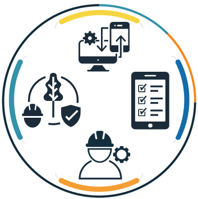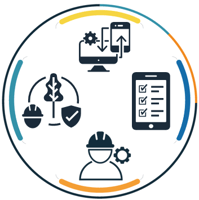We all now clearly understand that when it comes to reducing the spread of a virus, one powerful weapon at our disposal is limiting physical interactions and touchpoints between individuals.
In large numbers of industries, we have seen millions of professionals transition from corporate office spaces to working from home. The fact that so many are able to do that is one tiny silver lining during this crisis – it’s difficult to imagine how much more devastating an economic impact COVID-19 would have had if it had broken out in, say, 1995, before the internet.
But while some operations can be performed remotely, for many tasks there is still a need for workers to be on site, for example when interactions with physical assets are required. For those essential employees, maintaining as much social distancing as possible from fellow co-workers, and reducing the number of physical touchpoints, is critical for combatting the spread of a virus.
The reality, however, is that paper continues to be a major part of many industries’ operations, both for capturing data and for executing work. These paper work packages pass across dozens of hands through their lifecycle, which in turn creates an unnecessary physical vector for spreading the virus.
To run some simple math for an industry we’re familiar with, nuclear power: approximately 1,000 work packages are executed in a month per nuclear unit. Each paper work package is handled at least 50 times in its lifecycle, between the persons compiling the package, crew members handling it, supervisors performing sign-offs, and support staff scanning it back in for long-term retention. Therefore, there are at least 50,000 physical touch points in just one month, at just one site, that can be avoided with an electronic process.
Specifically, digitizing a paper-based process can help reduce virus transmissions in the following two major ways:
- Transferring information digitally instead of by handing a package of paper from one person to the next both eliminates a touchpoint (the paper itself) and allows for social distancing
- Even though viruses tend to live longer on hard surfaces like glass and plastic, disinfecting a single mobile device is easier than trying to disinfect hundreds of thousands of pieces of paper
Technology can’t stop the transmission of a virus from one person to the next; only good habits and proper social behaviors can do that. But what technology can do is help minimize the risk associated with performing critical work that must continue, even when a virus threat is present. Moving off paper has always had intrinsic advantages in gained efficiencies; it now has advantages directly related to the health of our most essential workers, as well.







